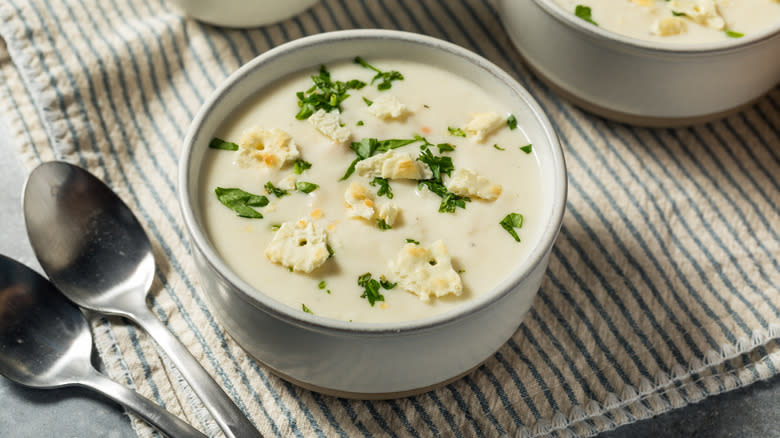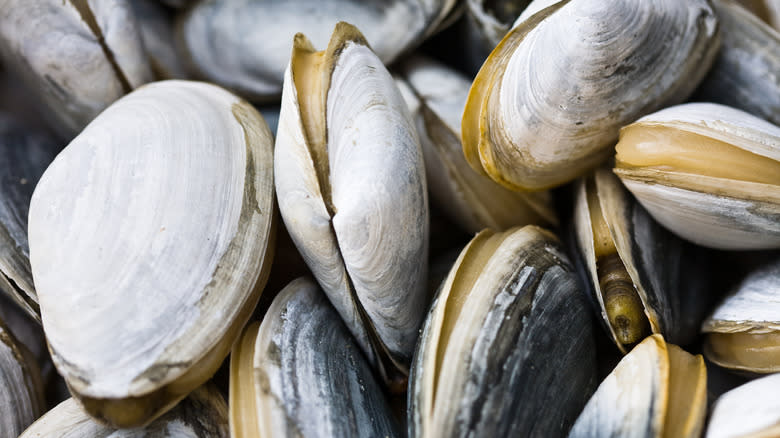The Best Clam Variety To Use For Homemade Chowder

Clam chowder should be toothy and flavorful, with contrasting textures from the clams and potatoes. The beloved comfort food should not be sludgy, gruel-like, or rubbery — this means using the right type of clams for the job is crucial to a delicious bowlful. For a knockout flavorful clam chowder, look specifically for chowder quahogs. This is the largest type of quahog clam, named for its gilded ability to transform a pot of clam chowder. Each clam is three inches wide or wider, and can weigh as much as half a pound. The size of a clam largely depends on what age it was at the time of harvesting, and quahogs tend to be three to four years old.
In the pot, they're total superstars. But on their own, chowder quahogs are too large, meaty, and physically tough to be enjoyed raw — or really any other way except for slow-boiling. It's like a puck of clam meat, which is awesome, but requires a little prep work to make palatable. The time spent cooking in a hot chowder is perfect (and necessary) for turning these toughies tender. Plus, the bold, salty flavor of fresh quahogs produces a potent brine that can be used in place of store-bought clam broth or clam juice to create a dimensional, creamy New England clam chowder. When figuring out how much to buy, expect that roughly a pound of quahog clams is enough per serving of chowder.
Read more: Hacks That Will Make Boiling Your Eggs So Much Easier
Rock The Quahog — The New England Hard-Shell Clam Superstar

Chowder quahogs are the best fit for the pot — especially compared to other types of clams that shine in their own arenas, sure, just not the chowder zone. New England steamer clams, for instance, tote a brittle shell and soft meat, meaning they can be cooked with nothing more than a quick steam, but they don't hold up as well structurally in soup. In a similar vein, manila clams of the West Coast are small and sweet, a great fit for serving with sauce and butter, but not such a good fit for meaty, savory chowders.
Quahog clams live in the coastal waters of the eastern U.S. They were prized by the Narragansett tribe of Indigenous Peoples. They gave the clam the name "poquauhock," which was later anglicized to quahog. Per the lore, chowders as a gastronomic class can be traced back to coastal New England origins (Boston, Mystic, Nantucket, New Bedford) as folks dreamt up innovative dishes to make use of their local mollusks, along with other readily available ingredients like salt pork, potatoes, and cod. Quahogs are the bad boys that make New England the clam capital it is.
Of course, not every foodie has the proximity advantage of living near the region. If fresh chowder quahogs aren't available, all hope is not lost. Look for topneck or cherrystone clams. These are the next-widest varieties of the same hard-shell clam variety, followed by littleneck and countneck.
Read the original article on Tasting Table.


